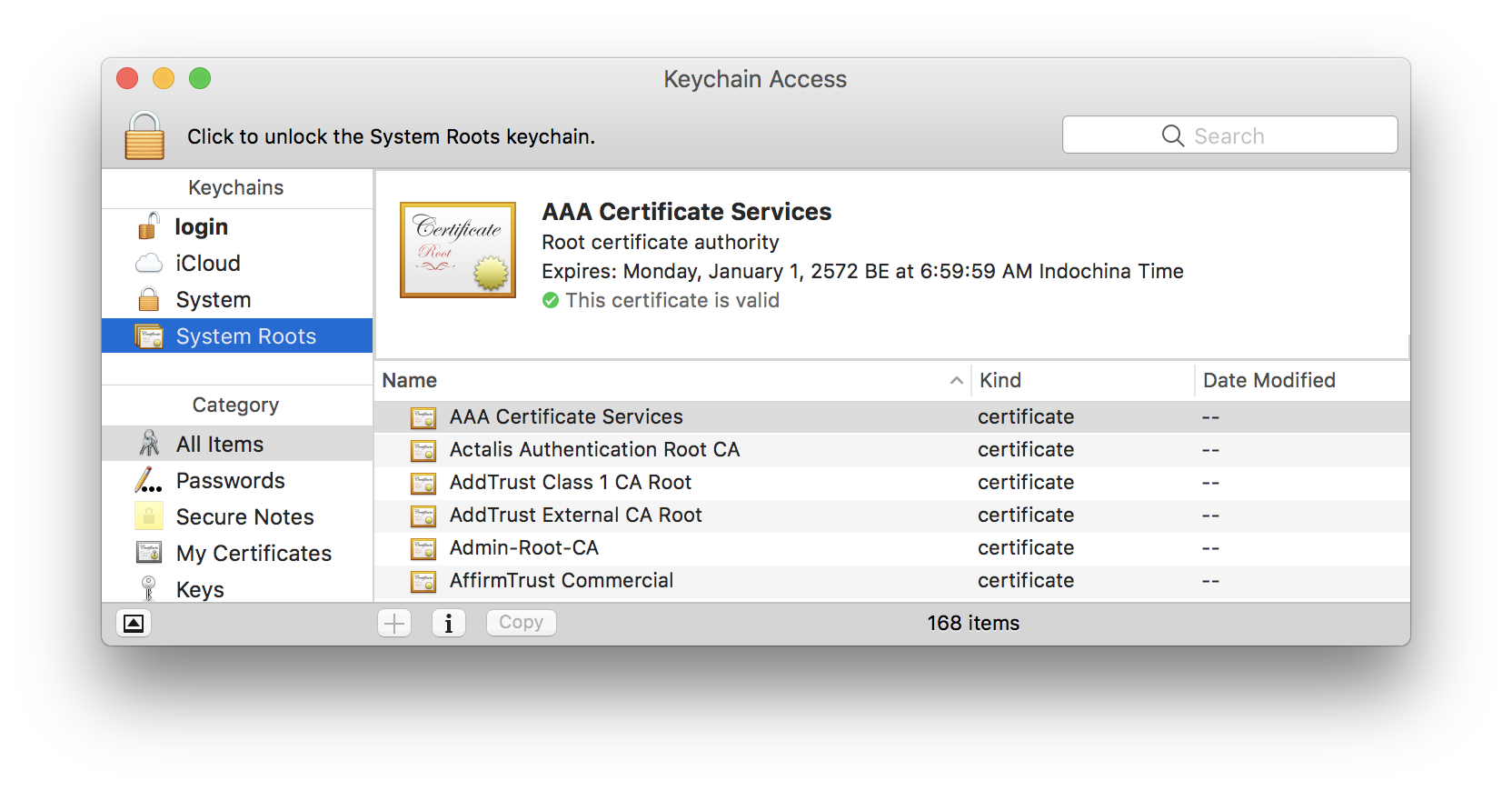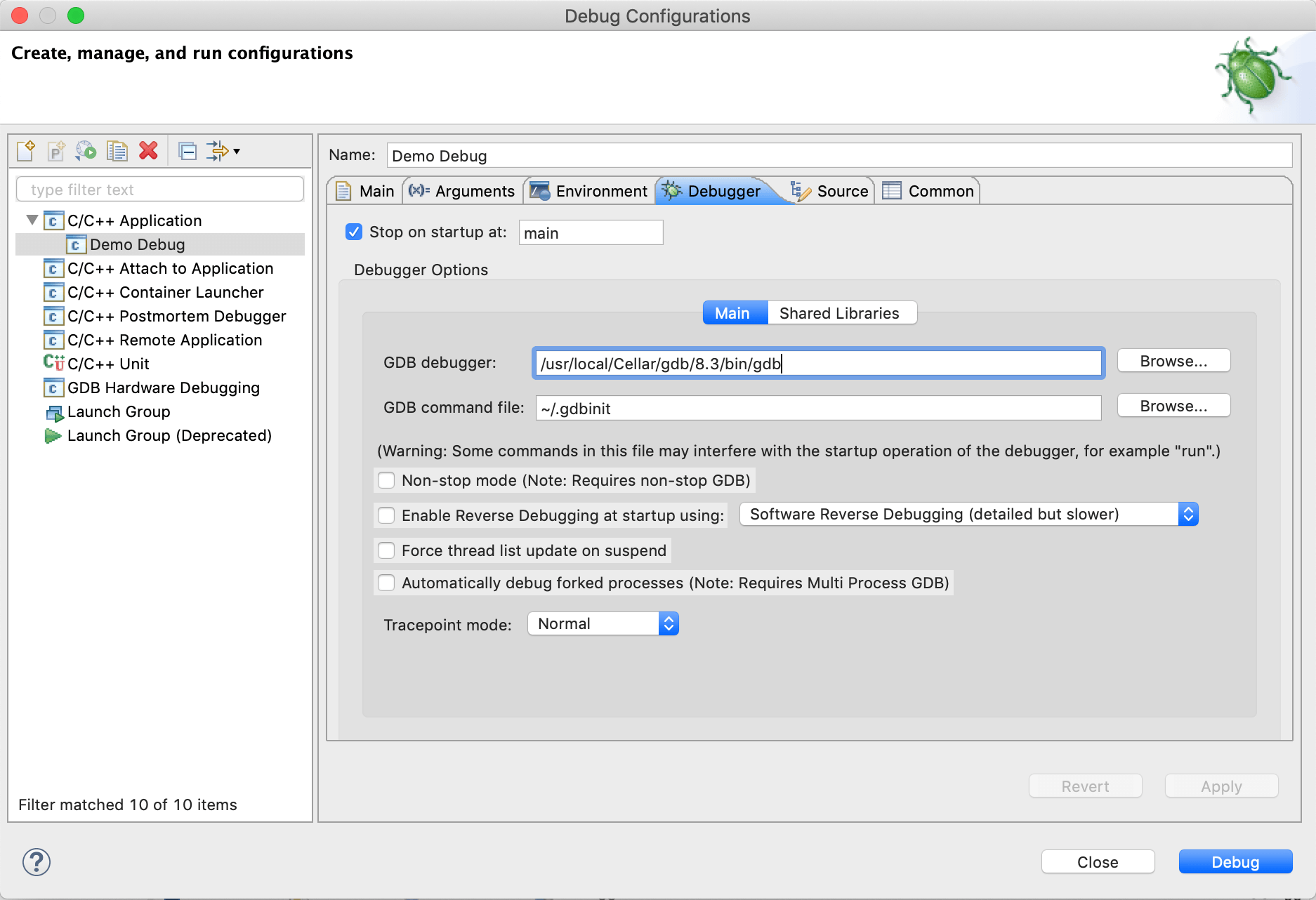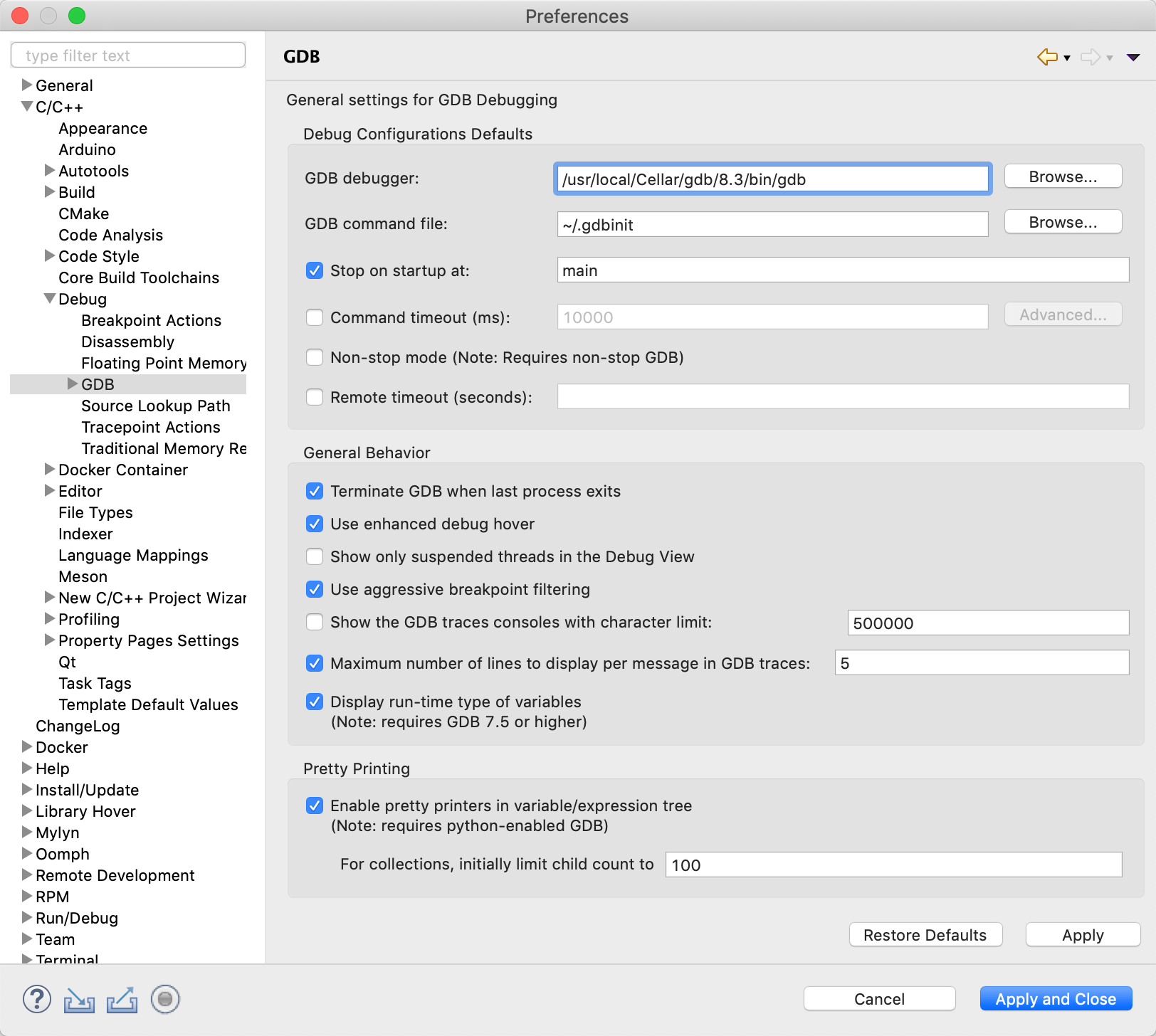### - gdb ʙɪᴛᴇ - GDB GDB - Marrakesh GDB - Marrakesh GDB - Marakesh Gdb - Marrakesh gdb - P.R.E.S.H. Madwayz Loc,L Lirik,King Kollecta,Mak GDB - Marrakesh GDB - Marrakesh GDB - Mar 184. Sep 17, 2020 Fortunately the rest of this guide walks you through all of the steps you'll need in order to use gdb effectively on your Mac. In order to give gdb the permissions it needs, you'll need to generate a self-signed certificate. Here are the steps: Launch Keychain Access application: Applications Utilities Keychain Access. Batch mode may be useful for running GDB as a filter, for example to download and run a program on another computer; in order to make this more useful, the message Program exited normally. (which is ordinarily issued whenever a program running under GDB control terminates) is not issued when running in batch mode.
- October 24th, 2020: GDB 10.1 Released! The latest version of GDB, version 10.1, is available for download. This version of GDB includes the following changes and enhancements: Support for debugging new targets: BPF (bpf-unknown-none) GDBserver support for the following targets: ARC GNU/Linux. RISC-V GNU/Linux.
- Gdb Debugger Download For Mac Windows 10. Viewing and changing variables at runtime is a critical part of debugging. Try providing invalid inputs to functions or running other test cases to find the root cause of problems. Typically, you will view/set variables when the program is paused. Prints current value of variable x.
If you work on a Mac OS X 10.9 Mavericks or later, you will run into the problem of Eclipse refusing to interactively debug problems that otherwise build and run fine: An attempt to start a debugging session by selecting Run
Debug from the menu will result in Eclipse complaining that an Error with command: gdb --version
has occurred.

The problem is caused by Apple switching away from GDB, the GNU debugger, to LLDB, the LLVM debugger, in their Xcode toolchain (along with the transition from GCC to Clang). Unfortunately, Eclipse is not capable of communicating with any debugger other than GDB (yet). Here is a step-by-step guide for installing and configuring GDB.
Installing GDB
As with GCC, the easiest way to install GDB is through Homebrew. In a Terminal window, run the command brew install gdb, and wait for it to complete. (As usual, it may ask for your password.)
Now, we need to code-sign the GDB executable, so it will be allowed to control other processes, as necessary for a debugger. For that, we will first create a new certificate in Keychain.
Creating a Certificate
Open the Keychain Access application (can be found in Applications/Utilities directory or through Spotlight). Select Certificate Assistant
Create a Certificate in the application menu (Keychain Access). An assistant window will appear for guiding you through the process.
- First, you will be asked for the name and type of the certificate. You may choose the name arbitrarily, but to simplify its future use in command line, prefer names without spaces or other fancy characters, e.g.,
gdbcert. - Make sure that Identity Type is set to Self Signed Root, change Certificate Type to Code Signing, check the Let me override defaults checkbox, and click Continue. Click Continue again in the popup prompt warning about the certificate being self-signed.
- On the next page, leave Security Number to be 1, and set Validity Period to a large enough number of days to cover the duration of the class or more, say, 365. (Certificates cannot last forever; the maximum validity period is 20 years.)
- Then click Continue once again, and keep doing so to skip the next six screens until you see the one entitled Specify a Location For The Certificate. For the only property, Keychain, choose System from the drop-down list. Lastly, click Create, type in your password, if prompted, and click Done.
- Back in the main window, choose the System keychain in the sidebar on the left, and select the newly created certificate from the list. Open the context menu and select Get Info. In the information window that will appear, expand the Trust section and set the Code Signing property to Always Trust. Close this window (you may be asked for your password), and quit Keychain Access.
Signing GDB
Our new certificate is now ready to be used. In order to make it immediately available for signing, we need to restart the Taskgate access-control service. You can use Activity Monitor to do this (also found in Applications/Utilities). Open it and filter the list of processes by typing taskgated in the search field in the toolbar. (If you cannot find it, make sure the menu item View
All Processes is checked.)

There should be exactly one process left in the list. Highlight it, then select View
Quit Process from the menu, and click Quit in the popup prompt. The Taskgate process will be terminated and, consequently, should disappear from the list. In a few seconds, it will be restarted by the system and should reappear in the list. Please wait for this to happen (it may take up to a minute or two, at worst).
Finally, in a Terminal window, run codesign -s gdbcert /usr/local/bin/gdb (if you named your certificate differently, replace gdbcert with its name here). Once again, you will be prompted for you username and password. If the command does not produce any output, then GDB is successfully signed.
Configuring Eclipse
The only thing left to do is to point Eclipse to the GDB executable. Open Eclipse
Preferences from the main menu (not to be confused with Project Preferences). In the tree of options listed in the sidebar, navigate to C/C++
Debug
GDB, and set the GDB debugger field to /usr/local/bin/gdb.
If there is no GDB section in the C/C++
Debug subtree, close the preferences window, and try to first start a debugging session for any project that you can already run without problems. You can do it by either clicking the Debug button on the toolbar, or selecting Run
Debug from the main menu. This attempt will, of course, fail with an error message about the gdb command, but it will force the said C/C++
Debug
GDB settings to appear in the preferences.
This will change the GDB executable for new projects; for all existing ones (that you are going to use debugging for), you will need to manually update their debug configurations. To do that, select Run
Debug Configurations from the menu. In the window that appears, one after another, select every project under the C++ Application section in the sidebar. For each of them, open the Debugger tab, set the GDB debugger field to the same path /usr/local/bin/gdb, and click the Apply button. After repeating this change for all listed projects, click Close.
If the above steps do not solve the issue on your machine, or you encounter a problem while following them, please do not hesitate to come to one of the upcoming common labs for help.
NVIDIA® CUDA Toolkit 11.4 Update 1 no longer supports development or running applications on macOS. While there are no tools which use macOS as a target environment, NVIDIA is making macOS host versions of these tools that you can launch profiling and debugging sessions on supported target platforms.
You may download all these tools here. Note that the Nsight tools provide the ability to download these macOS host versions on their respective product pages.
Please visit each tool's overview page for more information about the tool and its supported target platforms.
The macOS host tools provided are:
- Nsight Systems - a system profiler and timeline trace tool supporting Pascal and newer GPUs
- Nsight Compute - a CUDA kernel profiler supporting Volta and new GPUs
- Visual Profiler - a CUDA kernel and system profiler and timeline trace tool supporting older GPUs (see installation instructions, below)
- cuda-gdb - a GPU and CPU CUDA application debugger (see installation instructions, below)
Revision History
Instructions for installing cuda-gdb on the macOS
- This tar archive holds the distribution of the CUDA 11.4 cuda-gdb debugger front-end for macOS.
Native macOS debugging is not supported in this release. Remote debugging from a macOS host to other CUDA enabled targets, however, is supported.
Supported Mac platforms: macOS 10.13
- To install:
- Create an installation directory
INSTALL_DIR=$HOME/cuda-gdb-darwin-11.4mkdir $INSTALL_DIRcd $INSTALL_DIR - Download the cuda-gdb-darwin-11.4.100.tar.gz tar archive into
$INSTALL_DIRabove - Unpack the tar archive
tar fxvz cuda-gdb-darwin-11.4.100.tar.gz - Add the bin directory to your path
PATH=$INSTALL_DIR/bin:$PATH - Run cuda-gdb --version to confirm you're picking up the correct binaries
cuda-gdb --version
You should see the following output:
- NVIDIA (R) CUDA Debugger
11.4 release
Portions Copyright (C) 2007-2021 NVIDIA Corporation
GNU gdb (GDB) 10.1
Copyright (C) 2020 Free Software Foundation, Inc.
License GPLv3+: GNU GPL version 3 or later
Run nvvp again:
> ./nvvp- Summary of supported features:
- Remote profiling
- Import nvprof output files
- Refer the 'Visual Profiler' section in the 'Profiler User's Guide'
for more information:
- https://docs.nvidia.com/cuda/profiler-users-guide/index.html#visual
- Download version: 8u144-b01 (Zulu: 8.23.0.3) .dmg.zip.tar.gz
- Download version: Zulu 8.23.0.3 (build 1.8.0_144-b01 .zip
Notes about JRE Requirements when using Visual Profiler on the macOS
- OpenJDK provides an open-source (and standards compliant) implementation of a Java compliant JVM.
Binaries are provided by various vendors such as Oracle, Azul Systems (Zulu), Amazon, Red Hat, IBM, etc.
- Visual Profiler needs to use an older version of Java, specifically JRE update 151, to work correctly.
This is currently not offered by Oracle JDK but is provided by Azul Systems (Zulu).
- The Bazel Build project also uses the Zulu builds of OpenJDK.
- Download JDK 8.0.144 to get JRE update 151:
Brew Install Gdb
Gdb Download Mac
Revision History
